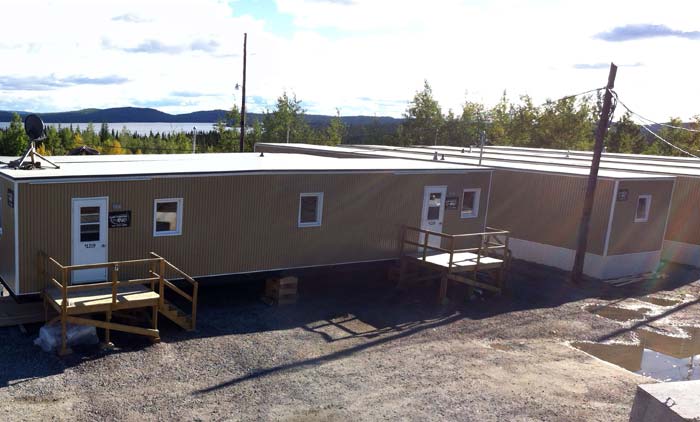Arianne Phosphate (TSXV: DAN; US-OTC: DRRSF) says one of the world’s largest greenfield phosphate-rock projects has just gotten bigger, with near-surface inferred resources added from the Lac à Paul deposit’s Nicole zone in Quebec.
Nicole, which is 700 metres southeast of the project’s main Paul zone, brings another 78 million tonnes grading 5.34% phosphorous pentoxide (P2O5) to the Lac à Paul project at a cut-of grade of 3.5% P2O5. The resource estimate was based on 20 diamond drill holes and 4,000 metres of drilling. Arianne has only drilled 200 metres into the Nicole zone, and it’s open at depth.
Resources from the Nicole zone could trim the project’s already low stripping ratio, the company believes, and improve its economics, which were outlined in a feasibility study last October. The project has a 26-year mine life, and stripping for the Paul deposit is 0.87 to 1 over the first four years of mine life, and 1.14 to 1 over the mine life.
In addition to news of the maiden resource estimate for Nicole, Arianne reported that it has a new target on the property called the Nouvelle zone, 100 metres north of the Paul zone. The company believes Nouvelle hosts in the range of 260 million to 390 million tonnes, with grades between 5.34% and 7.13% P2O5.
The Paul zone feasibility study showed that the project — 200 km north of the Saguenay–Lac-Saint-Jean region of Quebec — would operate as an open-pit mine producing 3 million tonnes a year of phosphate concentrate at 38.6% P2O5.
The Paul deposit has proven and probable reserves of 472 million tonnes at 6.90% P2O5. Measured and indicated resources stand at 590 million tonnes grading 7.13% P2O5, with inferred resources adding 9.8 million tonnes of 5.89% P2O5.
In addition to the resources contained in the Paul deposit, Arianne has completed resource estimates for Zone 2 and the Manouane zone. Manouane has measured and indicated resources of 163.8 million tonnes averaging 5.88% P2O5, while Zone 2 has an inferred resource of 64 million tonnes averaging 4.55% P2O5.
The 2013 feasibility study excluded resources from Manouane, Zone 2 and Nicole, which if added to the mix could extend the mine life by another eight years — bringing the mine life to 37 years, assuming it converts into reserves, the company’s CEO, Brian Kenny, says in an interview.
But Arianne thinks the project is going to get a bit larger than that.
“Our mission is to get our resources up to a number that should be sufficient to support a 50-year mine life,” Kenny says. “And if we meet our 50-year goal, it would put us in the large resource category . . . we’re the largest phosphate rock development in the world, at 3 million tonnes.”
According to the feasibility study, Arianne will transport the phosphate concentrate by truck on a logging road to the deepwater Port of Saguenay on the Saguenay River.
The mine and processing plant and transportation system needed to get the product to port would cost US$1.2 billion, the study found, with capital payback taking four and a half years. The study outlined a US$1.7-billion post-tax net present value, with a 16.7% post-tax internal rate of return.
Based on all operating costs, the phosphate concentrate annual operating cost free-on-board Port of Saguenay is US$93.7 per tonne.
The project would be powered by Hydro-Québec through Rio Tinto Alcan’s power system from the Chute-des-Passes generating station, which is less than 30 km from the project. A 345-kilovolt to 161-kilovolt substation would be built at Chute-des-Passes. The substation would supply the power through a 161-kilovolt transmission line.
Arianne is looking for a strategic partner — preferably a large industry player.
Kenny is optimistic that given the project’s size, infrastructure, location in a stable jurisdiction and new provincial government that supports Plan Nord, finding a strategic partner shouldn’t be all that difficult.
“The Quebec government formally named our project in their February budget as one of the projects that they wish to provide strong support to because of all the economic benefits it would bring to the province and to the federal government,” Kenny says. “The benefits are in the order of $12 billion over the 26-year mine life of the project.”
He also notes that with a clean concentrate grading 39% P2O5, the Lac à Paul project is pretty attractive.
Over the last year Arianne has traded in a range of 95¢ to $1.69 per share. At press time it traded at $1.05 per share.


Be the first to comment on "Arianne Phosphate grows Lac Paul"